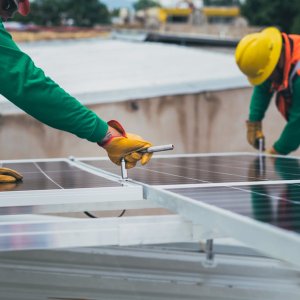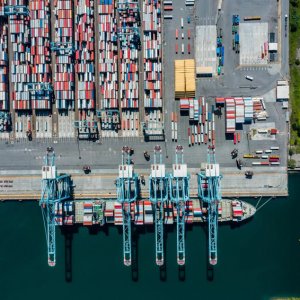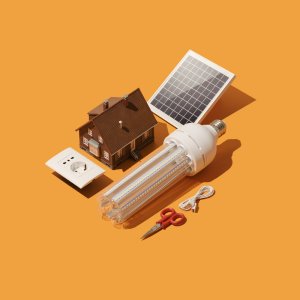We Should Talk About the Grid

STORY INLINE POST
Recently, I had the opportunity to participate in a panel about challenges in the solar PV sector. Nothing shocking came up: we talked about the risks inherent to a supply chain that is highly dependent on China and its implications on CAPEX trends for modules and other equipment; we also discussed restrictive regulatory changes applied by policy makers around the globe, motivated either by misguided ideologies or as a reaction to a challenging economic and geopolitical environment; and, last but not least, the fact that old grids simply cannot keep up with the pace of investment in power generation.
Depending on where you stand (literally) these factors play a more or less relevant role in the present and future of the sector. In the case of Mexico, the focus has been recently directed to the regulatory angle; meanwhile, in countries like Chile, a mature power market where regulation is not a massive concern anymore, the discussion gravitates more toward the grid and its expansion plans. This is the case because, among other things, the government knows that any action aiming to solve the grid issue takes a very long time.
But what is the grid issue? Basically, our entire capacity to use electricity for almost everything, a trend known as electrification, depends on our ability to take that energy from where it is generated to where it is consumed. The grid does that for us. And to ensure it continues to do that, we need to maintain it, modernize it and grow it. Failure to do any of the above, essentially means that at some point, imbalances and interruptions of power will be unavoidable. The cost of such interruptions goes beyond missing your favorite game on TV: think of mobility, banking, work, production — everything runs on electricity now. Some say that by looking at the grid one can tell much about the evolution of a certain place, if it grew into an industrial area or remained underdeveloped. The same is true for the future:
If continuous actions to improve the grid are not taken, chances are, there will be little or no economic growth there.
Take Ciudad Juárez in Chihuahua, for example, a border town within a desert that managed to configure the right combination of production factors to attract huge manufacturing investments. Today, the so-called maquilas rank in the top of regional exports and could be heading toward a second wave of investments by capturing “the nearshoring opportunity”. However, these companies need cheap, reliable energy as opposed to what most of them have been getting in the recent past: constant energy cuts. Instead of riding a wave of growth, this hub faces losing a significant supply of productive jobs for reasons directly attributable to a lack of investment in the grid.
On the other hand, CFE dedicates a decreasing amount of budgeted CAPEX to the Mexican network. Enjoying a monopoly in transmission/distribution and securing a profitable business (only one in the whole company) does not seem enough to choose to allocate more investment. This signals that CFE is playing a slightly different game: to protect market share in generation, it is freezing investments in the grid, even if that means stopping economic development altogether. CFE is holding the key to the market opening in a similar fashion to PEMEX trying to hold the midstream sector as much as it can. Meanwhile, the Ministry of Economy recently published a long due Industrial Policy/Plan. Some industrial chambers rushed to celebrate the act. However, a small detail seems to have been overlooked: where will the power for all these electricity-intensive businesses come from?
According to their Plano Decenal Brazil expects to reach more than US$17 billion deployed in their grid within 2021 and 2030. For countries at our stage of development, I am convinced the only way to do this at the necessary speed is by opening transmission and distribution to private investment. The result? Around 400MW of solar PV capacity are added per month in Brazil while Chile is planning to go from 54 percent renewables penetration today to +80 percent by 2030. In addition, to stay on track for their net-zero goals, both governments have more resources to invest in education, health or global warming impact versus the amount they would have if both the proceeds and the investment burden remained alongside the traditional infrastructure monopoly. At least in my line of sight, I am watching investments planned for Mexico fly away to other countries … a missed opportunity.
The idea may not be easy to digest but opening generation is not enough; transmission and distribution are necessary too. Arguments against modifying Article 27 of the Mexican Constitution range from energy security (yes, despite that fact we have less than three days of gas reserves and seven days of gasoline with devastating natural disasters around the corner) to CFE's viability as a productive state enterprise. Yet, the hard truth is that the only way the government can afford allocating resources at that scale and speed is by giving up on other capital allocations, such as large fossil-fueled generation projects (to keep the government happy), massive labor liabilities (to keep public employees happy) or huge final consumer subsidies (to keep voters happy). All of which seem to be a higher priority for the current administration.
Remember, to optimize systemwide costs, efficiency is required in every single step of the value chain. If renewables are the cheapest LCOE and a must to fight climate change, then we should figure out a way to increase their share. If that requires investment to adapt a century-old grid, then modernize it! If energy needs to reach the final consumer with fewer subsidies, make sure cost reductions permeate throughout the chain and provide alternatives in wholesale and retail too.
If the concern is the how, we can look at what other countries are doing. Tariffs are regulated in most of the world with comparable schemes. These are calculated by estimating CAPEX plus the opportunity cost on it — to incentivize investors — and remunerating OPEX, usually with downward trends. Several compensation mechanisms can be used to keep track of proper investments and fair access practices across the system. Paying for availability is one way to increase the level of service provided to consumers, which by the way, can be evaluated, ranked and penalized too. Finally, concessions can be efficiently and transparently planned, budgeted and allocated through auctions.
We have unprecedented momentum across the globe with most countries and many companies committing, to some extent, to net zero in the next decades, and a LCOE downward trend that will continue despite recent upheavals. Consequently, the money is still flowing into the sector in many countries. Until when are we going to continue denying ourselves a chance to get cheap, reliable and renewable energy?
I am afraid that if we keep going this way, even if we manage to solve more immediate regulatory challenges, soon we will face another wall, one that takes several years to climb.
























